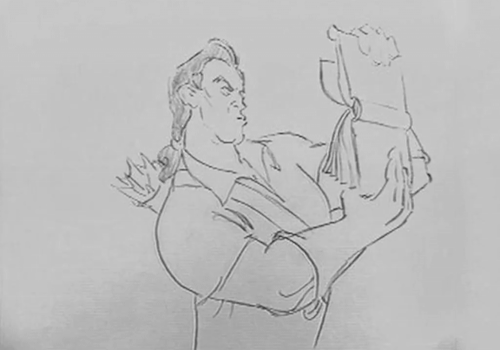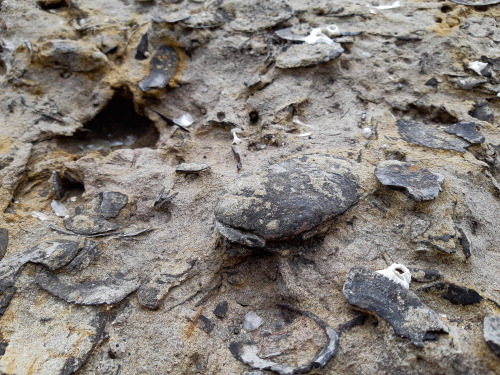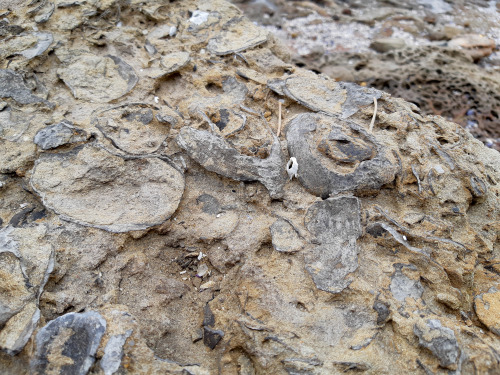“Fragile & Paper Thin, Is The Compelling Nature Of Many Perfect Things. Like Butterfly Wings, Unfolding
“Fragile & paper thin, is the compelling nature of many perfect things. Like butterfly wings, unfolding from a chrysalis, vibrant & vital in release. Exploring their place in this tangled world, faint heartbeat fluttering over roaring air, velvet lace floating on fitful winds. Barely there for the briefest of moments, then with one final, breathless flourish—gone again”.
RhymingTherapy—November 2020 (Caper White butterflies in my garden last weekend) poem inspired by @Writerscreed challenge “we need unfolding”
More Posts from Sawgrassnaturecenter and Others
Our resident Barred Owl did an impressive display today of how owls can turn their heads up to 270 degrees. This is due to a special adaptation on their vertebrae.
Barred Owls are native to Florida, but this one cannot be released back into the wild due to a permanent injury. He would not be able to survive in the wild on his own. Instead, he now has a happy home with dedicated care takers and sometimes makes himself visible to the public as an educational ambassador.
“Barred Owls are easiest to find when they are active at night—they’re a lot easier to hear than to see. Visit forests near water (big bottomland forest along a river is prime Barred Owl habitat) and listen carefully, paying attention for the species’ barking “Who cooks for you?” call.” - The Cornell Lab https://www.allaboutbirds.org/guide/Barred_Owl/overview

Check out our resident Yellow-Footed Tortoise, Carlos! Yellow-Footed Tortoises are native to the rainforests of South America.
The Sawgrass Nature Center is home to an aviary of recovering and permanent winged residents. This blue jay is one of the many that are to be soon as you walk through the surrounding enclosure.
Найти время, чтобы заметить красоту мира.
Найти силы, чтобы радоваться ей.
Жить. Просто жить и впускать в сердце радость...
Анна Чуланова
Take time to notice the beauty of the world.
Find the strength to enjoy her.
Live. Just live and let joy into your heart ...
Anna Chulanova
How to Read an Academic/Research Paper
The main sections are:
Abstract: a general overview of the paper’s content. It’s good to start here first, to sort of “seed” the ideas and concepts of the paper into your head.
Introduction: the general overview and setting of the paper. Sometimes you’ll find brief descriptions of key concepts or phrases
Methods: Read at the end, the technical jargon might be too heavy to for your to read this first.
Results:
Conclusion/Interpretation/Discussion: the hypothesis is either accepted or rejected. Reading the conclusion can help you decide if you want to spend your time reading the paper or not if you are looking for a specific method of doing something.
References: Read to familiarize yourself with the common titles, sources, and theories.

Tip: Read the Intro, and conclusion before you read the rest of the paper, its the fastest way of knowing what’s in the paper.
Look out for the keywords key contribution and significant.
Step by Step instructions:
Read Intro and Conclusion
Identify the big question - what is this paper about?
Summarize the background in five sentences - why is this research important?
Identify specific questions - What exactly are the authors trying to answer with their research.
Read methods
Read results and write down a sentence to summarize the result of each experiment.
How do the results answer the specific question?
Read the conclusion section - Do the authors think that the results answered the big question?
Now read the abstract - did it match what happened?
Sources:
https://medium.com/ai-saturdays/how-to-read-academic-papers-without-freaking-out-3f7ef43a070f
https://www.huffingtonpost.com/jennifer-raff/how-to-read-and-understand-a-scientific-paper_b_5501628.html
Invasive Species and the Burmese Python
Have you ever heard the term, “invasive species”? Listen along to this month’s podcast from the Sawgrass Nature Center as our staff teams up with the Nature Conservancy of Southwest Florida to discuss invasive species and the Burmese Python problem in the Everglades!
https://anchor.fm/snc-wild/episodes/Invasive-Species-and-the-Burmese-Python-Part--I-e11n04k
Beautiful metal tree art….

Are you feeling increased stress and anxiety due to COVID-19 related issues? Lavender is one of the best ways to naturally reduce stress and anxiety. Burn a lavender candle, use a few drops of lavender essential oils in a bath, or even use some to mix with lemonade!
Check out what other people are using lavender for here: https://www.ausnaturalcare.com.au/health/life-style/10-benefits-of-lavender-essential-oil-and-how-to-use-it/
Great Horned Owls are native to the Americas, with a preference for deciduous, coniferous, forest, and desert habitats. They are carnivores with a diet that includes small mammals, reptiles, and even other owls!
Fun fact: When clenched, a Great Horned Owl’s strong talons require a force of 28 pounds to open.
Our resident owl is with us due to a permanent wing injury that prohibits them from ever flying properly again.




Ancient sea bottom exposed along a modern seaside rocky platform. This immense amount of fossilized shells is preserved in ~250 million year old sea sediments which would have been a feeding grounds for all these bivalves.
South coast, NSW, Australia.
-
 junian5522 liked this · 3 months ago
junian5522 liked this · 3 months ago -
 schattenwolf69 liked this · 4 months ago
schattenwolf69 liked this · 4 months ago -
 brownie-pics liked this · 4 months ago
brownie-pics liked this · 4 months ago -
 mantrabay reblogged this · 4 months ago
mantrabay reblogged this · 4 months ago -
 autonomy1 liked this · 1 year ago
autonomy1 liked this · 1 year ago -
 lydiaplain liked this · 1 year ago
lydiaplain liked this · 1 year ago -
 annaczphotography liked this · 1 year ago
annaczphotography liked this · 1 year ago -
 thelooselytiedkikoy liked this · 1 year ago
thelooselytiedkikoy liked this · 1 year ago -
 th3-0bjectivist liked this · 1 year ago
th3-0bjectivist liked this · 1 year ago -
 lipstickdoll7 liked this · 1 year ago
lipstickdoll7 liked this · 1 year ago -
 forlornalbatross liked this · 1 year ago
forlornalbatross liked this · 1 year ago -
 stewacai reblogged this · 1 year ago
stewacai reblogged this · 1 year ago -
 landohnewiederkehr liked this · 1 year ago
landohnewiederkehr liked this · 1 year ago -
 alwaysdearie reblogged this · 1 year ago
alwaysdearie reblogged this · 1 year ago -
 starlight2travel reblogged this · 1 year ago
starlight2travel reblogged this · 1 year ago -
 jackwiant liked this · 1 year ago
jackwiant liked this · 1 year ago -
 sofiz24 reblogged this · 1 year ago
sofiz24 reblogged this · 1 year ago -
 sofiz24 liked this · 1 year ago
sofiz24 liked this · 1 year ago -
 ladystardustsoul liked this · 1 year ago
ladystardustsoul liked this · 1 year ago -
 vuonkhuya liked this · 1 year ago
vuonkhuya liked this · 1 year ago -
 magicdreamspoetry liked this · 1 year ago
magicdreamspoetry liked this · 1 year ago -
 becoming--nobody liked this · 1 year ago
becoming--nobody liked this · 1 year ago -
 asikan liked this · 1 year ago
asikan liked this · 1 year ago -
 omgespinas13 liked this · 1 year ago
omgespinas13 liked this · 1 year ago -
 sanjogsonsand liked this · 1 year ago
sanjogsonsand liked this · 1 year ago -
 thelcsdaily liked this · 1 year ago
thelcsdaily liked this · 1 year ago -
 liliane-lilly liked this · 1 year ago
liliane-lilly liked this · 1 year ago -
 thefang222 liked this · 1 year ago
thefang222 liked this · 1 year ago -
 pasha-71 liked this · 1 year ago
pasha-71 liked this · 1 year ago -
 chucklingpecan liked this · 1 year ago
chucklingpecan liked this · 1 year ago -
 samirafee liked this · 1 year ago
samirafee liked this · 1 year ago -
 smallcomic liked this · 1 year ago
smallcomic liked this · 1 year ago -
 pleasant52 liked this · 1 year ago
pleasant52 liked this · 1 year ago -
 dmitriy-rusanov liked this · 1 year ago
dmitriy-rusanov liked this · 1 year ago -
 a-ginlynn liked this · 1 year ago
a-ginlynn liked this · 1 year ago -
 jasmine7031 liked this · 1 year ago
jasmine7031 liked this · 1 year ago -
 nofatclips liked this · 1 year ago
nofatclips liked this · 1 year ago -
 asongpanda1 liked this · 1 year ago
asongpanda1 liked this · 1 year ago -
 kelime-defteri liked this · 1 year ago
kelime-defteri liked this · 1 year ago

The Sawgrass Nature Center (SNC) is a nonprofit located in South Florida. Our mission is to educate the public about native wildlife and environmental stewardship. We also rescue, rehabilitate, and release injured, orphaned, or sick wildlife. Animals that cannot be released due to permanent injuries or disabilities are given a forever home on site with animal keepers that know how to properly care for them. We are able to operate due to donations from generous patrons. If you are interested in helping us further our mission, check us out at: https://sawgrassnaturecenter.org/
202 posts